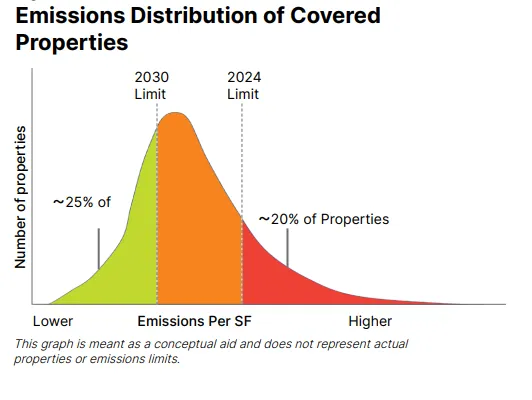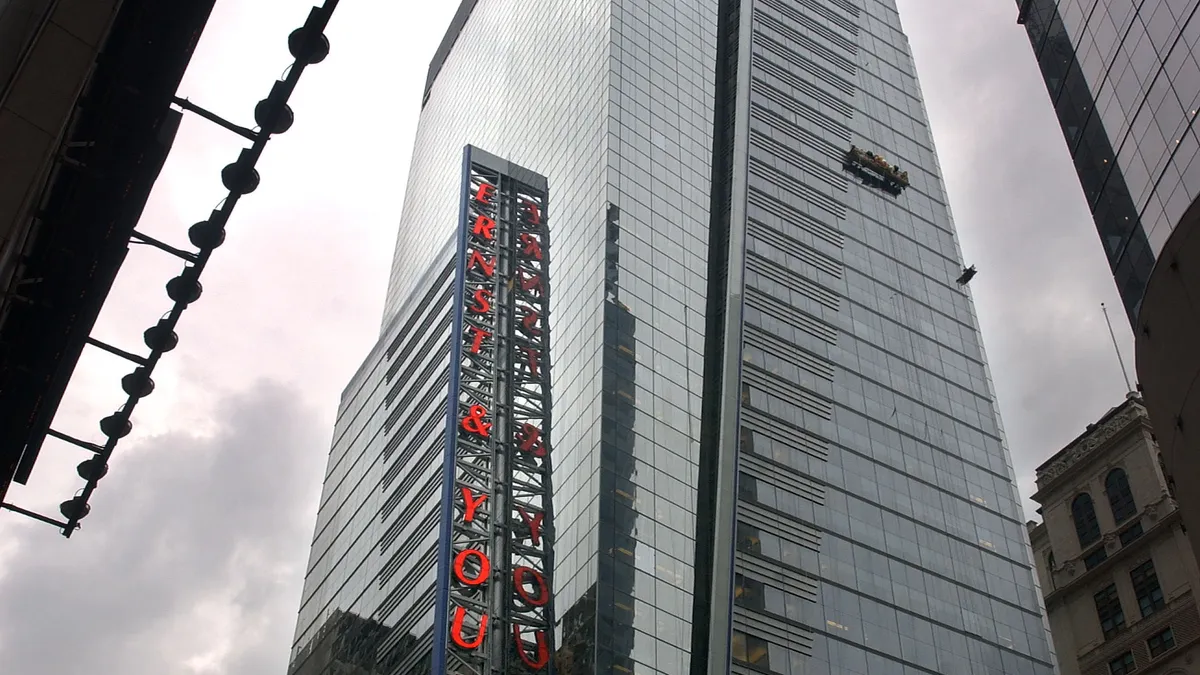Dive Brief:
- New York City rolled out a plan Tuesday to support the New York City Department of Buildings’ proposed rule to implement Local Law 97, which seeks to bring the city’s largest buildings to net-zero emissions status by 2030. The law’s requirements begin in 2024.
- Buildings falling short of the 2024 greenhouse gas emissions caps could receive an extension of up to two years during the 2024-2029 compliance period, along with reduced penalties, if they demonstrate a “good-faith” commitment to abide by the law.
- If no action is taken to improve their performance, about 20% to 25% of buildings will exceed emissions limits next year, and 75% to 80% of buildings won’t comply with emissions limits by 2030, the city estimates.
Dive Insight:
Local Law 97 was adopted in 2019 to get the city’s buildings to net-zero emissions by 2050. The law requires about 50,000 buildings to curtail their emissions over several compliance periods. Roughly two-thirds of the city’s greenhouse gas emissions come from buildings, according to the DOB and the Mayor’s Office of Sustainability.

The proposed rule to enforce Local Law 97 encourages early electrification of all covered buildings and guides buildings on how to meet the law’s prescriptive path requirements. The guidance includes energy conservation measures like adjusting temperature set points for heat and hot water to reflect appropriate space occupancy and facility requirements, repairing all heating system leaks and maintaining heating systems. It also recommends installing individual temperature controls, or insulated radiator enclosures with temperature controls on all radiators, insulating pipes for hot water and heating, and insulating steam system condensate tanks or water tanks.
Building owners and property managers are required to adopt these measures by Dec. 31, 2024. Starting May 1, 2025, owners of buildings with a surface area of 25,000 gross square feet or more are required to report their building’s actual greenhouse gas emissions to the DOB each year for the prior calendar year.
For every ton of carbon dioxide emitted above their allowance, owners of large buildings will have to pay a penalty of $268, starting 2024, the DOB said.
To qualify for the relief extended under the proposed rules, including avoidance of fines, building owners must submit a long-term decarbonization plan alongside their annual compliance report, outlining their envisioned retrofits, what kinds of emissions they expect to cut, associated costs and how they propose to finance that work. The DOB cited the submission of such a decarbonization plan as an example of “good faith effort.”
Buildings are also eligible to qualify for relief in the face of an unforeseen event such as a fire, flooding or a hurricane. Owners of buildings facing such contingencies must provide photographs demonstrating the nature and degree of damage, as well as a note on how such damage precluded their compliance in the calendar year in which the event occurred, the DOB said.
By focusing on buildings in an effort to meet upcoming emissions targets, the DOB’s final rules would “unleash a massive investment” in building envelope upgrades and heat pumps, create local jobs, reduce harmful air pollutants and maximize uptake of federal incentives, according to a joint statement from the Regional Plan Association, Urban Green Council, Association for Energy Affordability, NRDC and New York League of Conservation Voters.
The DOB is conducting a virtual public hearing on the proposed rule at 11 a.m. ET on Oct. 24 and is inviting public comments on the rule through Oct. 24.













